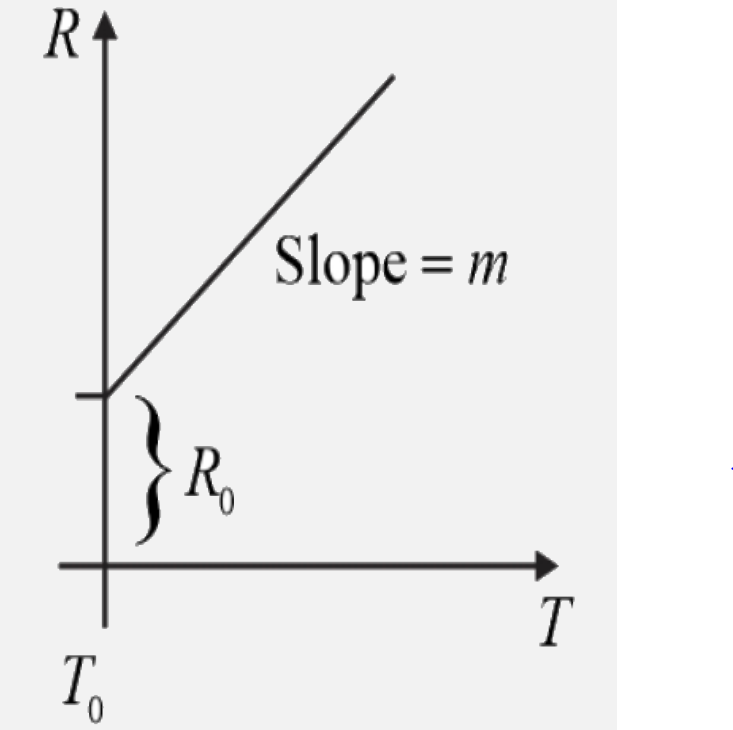The difference in the variation of resistance with temperature in a metal and a semiconductor arises essentially due to the difference in the
crystal structure
variation of the number of charge carriers with temperature
type of bonding
variation of cattering mechanism with temperature
The correct Answer is:B
To solve the question regarding the difference in the variation of resistance with temperature in metals and semiconductors, we can break down the explanation into clear steps:
1. Understanding Resistance in Metals:
- In metals, as the temperature increases, the atoms in the metal lattice vibrate more vigorously. This increased vibration leads to more frequent collisions between the conduction electrons and the vibrating atoms.
- As a result of these collisions, the resistivity of the metal increases with temperature. Since resistance (R) is directly proportional to resistivity (ρ), we can conclude that the resistance of metals increases with an increase in temperature.
2. Understanding Resistance in Semiconductors:
- In semiconductors, the behavior is quite different. When the temperature of a semiconductor increases, more electrons gain enough energy to jump from the valence band to the conduction band, thus increasing the number of charge carriers (electrons and holes).
- This increase in charge carriers more than compensates for any increase in scattering due to temperature. Consequently, the resistivity of the semiconductor decreases with an increase in temperature, leading to a decrease in resistance.
3. Comparing the Two:
- In summary, for metals, resistance increases with temperature due to increased scattering and higher resistivity.
- In contrast, for semiconductors, resistance decreases with temperature due to an increase in the number of charge carriers.
4. Conclusion:
- The fundamental difference in the variation of resistance with temperature between metals and semiconductors arises due to the difference in the variation of the number of charge carriers with temperature.
5. Selecting the Correct Option:
- Based on the analysis, the correct option is that the difference in the variation of resistance with temperature in metals and semiconductors arises essentially due to the difference in the variation of the number of charge carriers with temperature.
Final Answer:
The correct option is B: The difference in the variation of resistance with temperature in a metal and a semiconductor arises essentially due to the difference in the variation of the number of charge carriers with temperature.
- In metals, as the temperature increases, the atoms in the metal lattice vibrate more vigorously. This increased vibration leads to more frequent collisions between the conduction electrons and the vibrating atoms.
- As a result of these collisions, the resistivity of the metal increases with temperature. Since resistance (R) is directly proportional to resistivity (ρ), we can conclude that the resistance of metals increases with an increase in temperature.
- In semiconductors, the behavior is quite different. When the temperature of a semiconductor increases, more electrons gain enough energy to jump from the valence band to the conduction band, thus increasing the number of charge carriers (electrons and holes).
- This increase in charge carriers more than compensates for any increase in scattering due to temperature. Consequently, the resistivity of the semiconductor decreases with an increase in temperature, leading to a decrease in resistance.
- In summary, for metals, resistance increases with temperature due to increased scattering and higher resistivity.
- In contrast, for semiconductors, resistance decreases with temperature due to an increase in the number of charge carriers.
- The fundamental difference in the variation of resistance with temperature between metals and semiconductors arises due to the difference in the variation of the number of charge carriers with temperature.
- Based on the analysis, the correct option is that the difference in the variation of resistance with temperature in metals and semiconductors arises essentially due to the difference in the variation of the number of charge carriers with temperature.
The correct option is B: The difference in the variation of resistance with temperature in a metal and a semiconductor arises essentially due to the difference in the variation of the number of charge carriers with temperature.
Similar Questions
Show on a graph, the variation of resistivity with temperature for a typical semiconductor.
View SolutionDefine resistivity of a conductor. Plot a graph showing the variation of resistivity with temperature for a metallic conductor. How does one explain such a behaviour, using the mathematical expression of the resistivity of a material
View Solution
Knowledge Check
Figure (a) and figure (b) both are showing the variation of resistivity (p) with temperature (T) for some materials. Identify the types of these materials.
 AConductor and semiconductorBConductor and InsulatorCInsulator and semiconductorDBoth are conductor
AConductor and semiconductorBConductor and InsulatorCInsulator and semiconductorDBoth are conductor
Write down a simple relationship to show the varriation of resistance with temperature. Define temperature coefficient of resistance. In what way the temperature coffecient of carbon is different from that of the common conductors ?
View Solutionheat flows between two bodies due to difference in their
View SolutionBy increasing the temperature , the specific resistance of a conductor and a semiconductor
View SolutionThe difference in characters among same progeny is due to
View SolutionVariation of resistance of the conductor with temperature is shown . Temperature coefficient of the conductor is

View SolutionA constant potential difference is applied across a resistance. Consider variation of resistance with temperature. Which graph represents best the variation of power produced in resistance versus resistance?
View SolutionThe resistance of a metallic conductor increases with temperature due to.
View Solution
